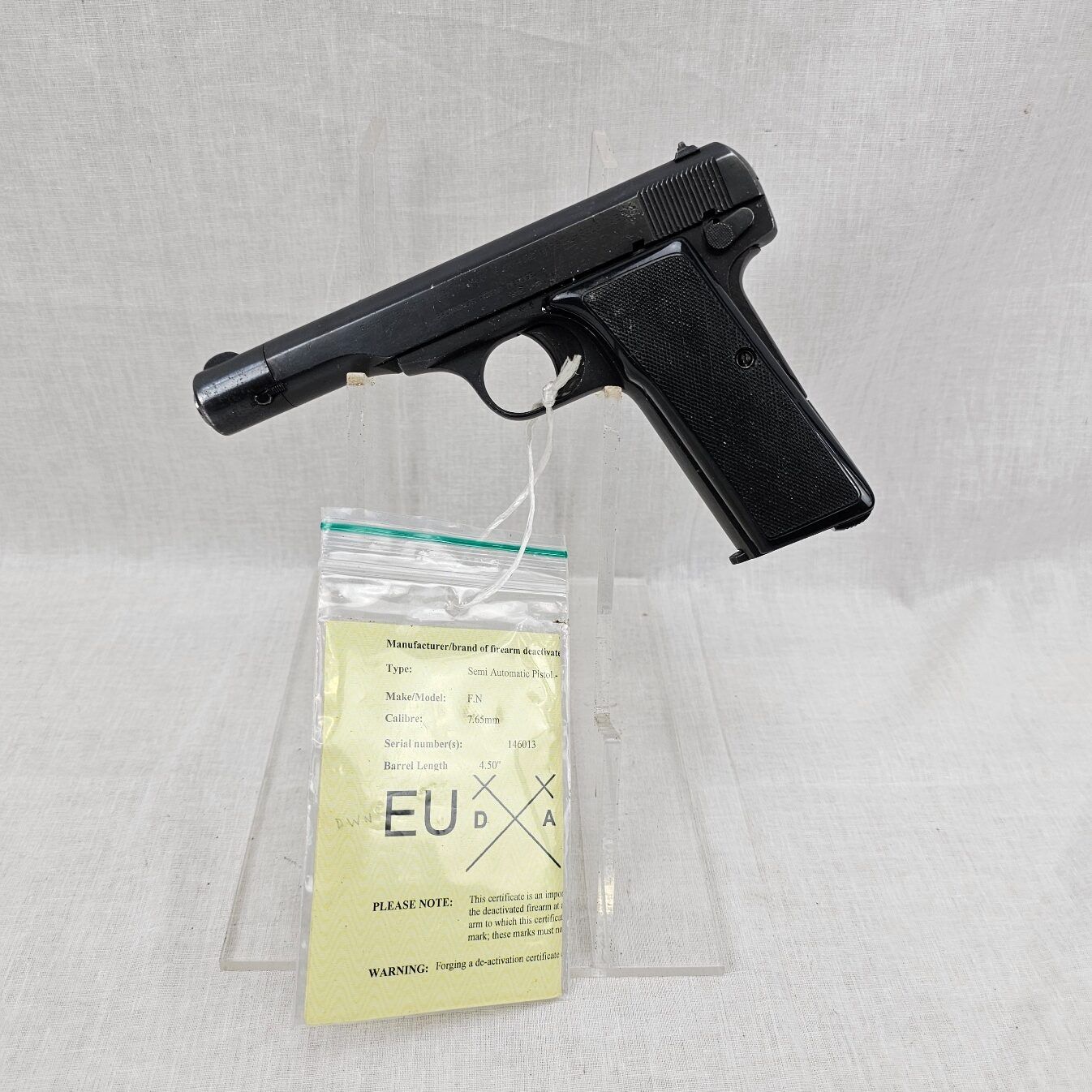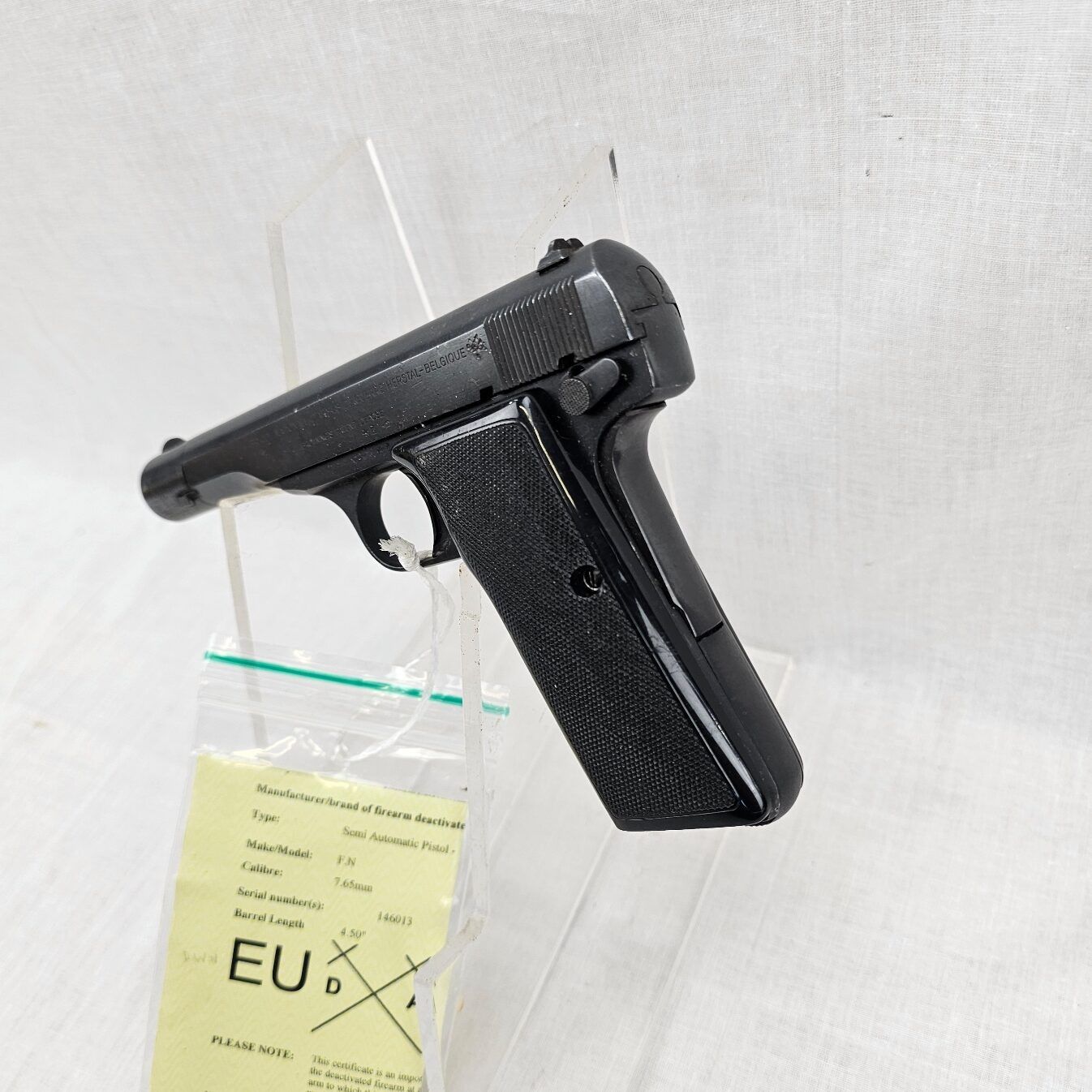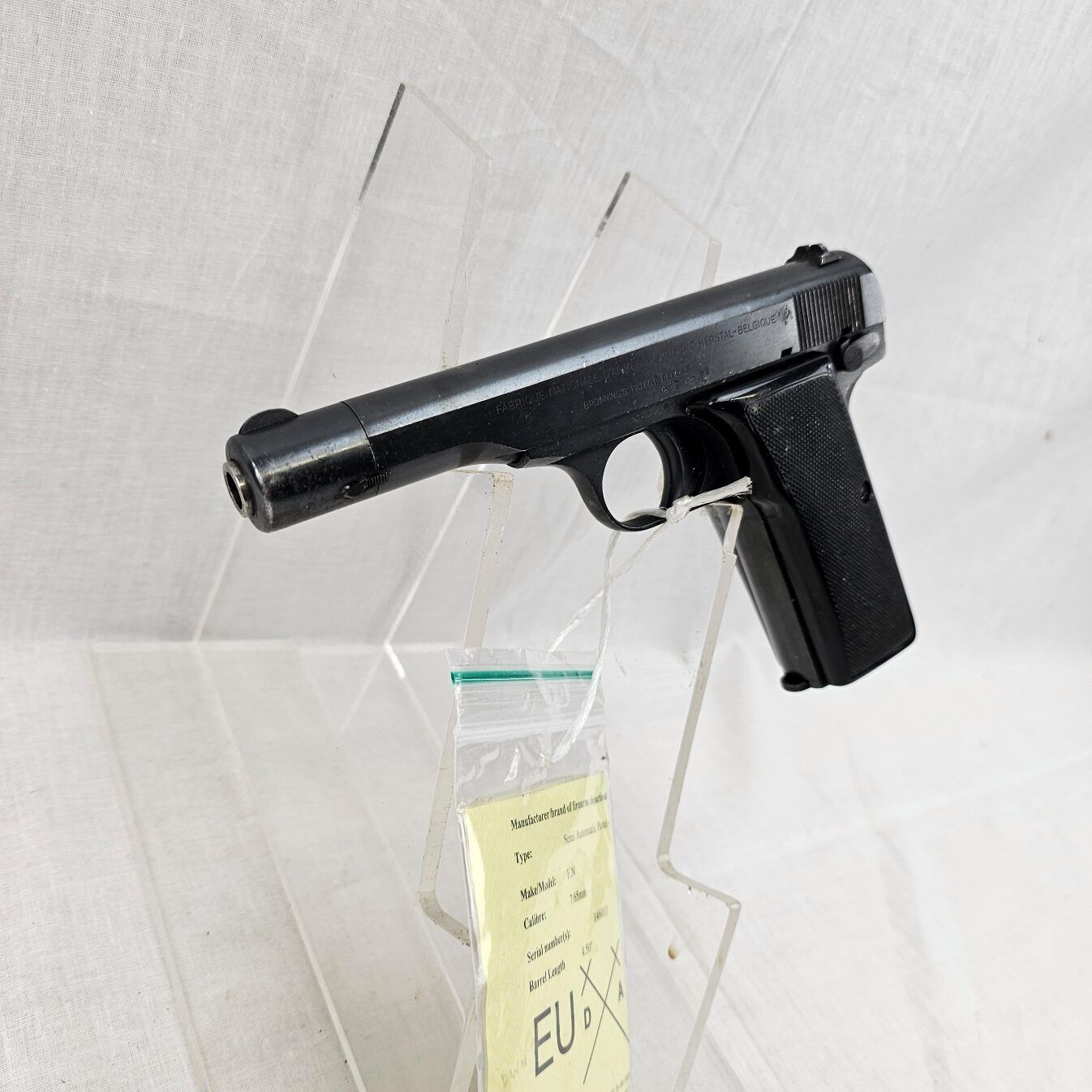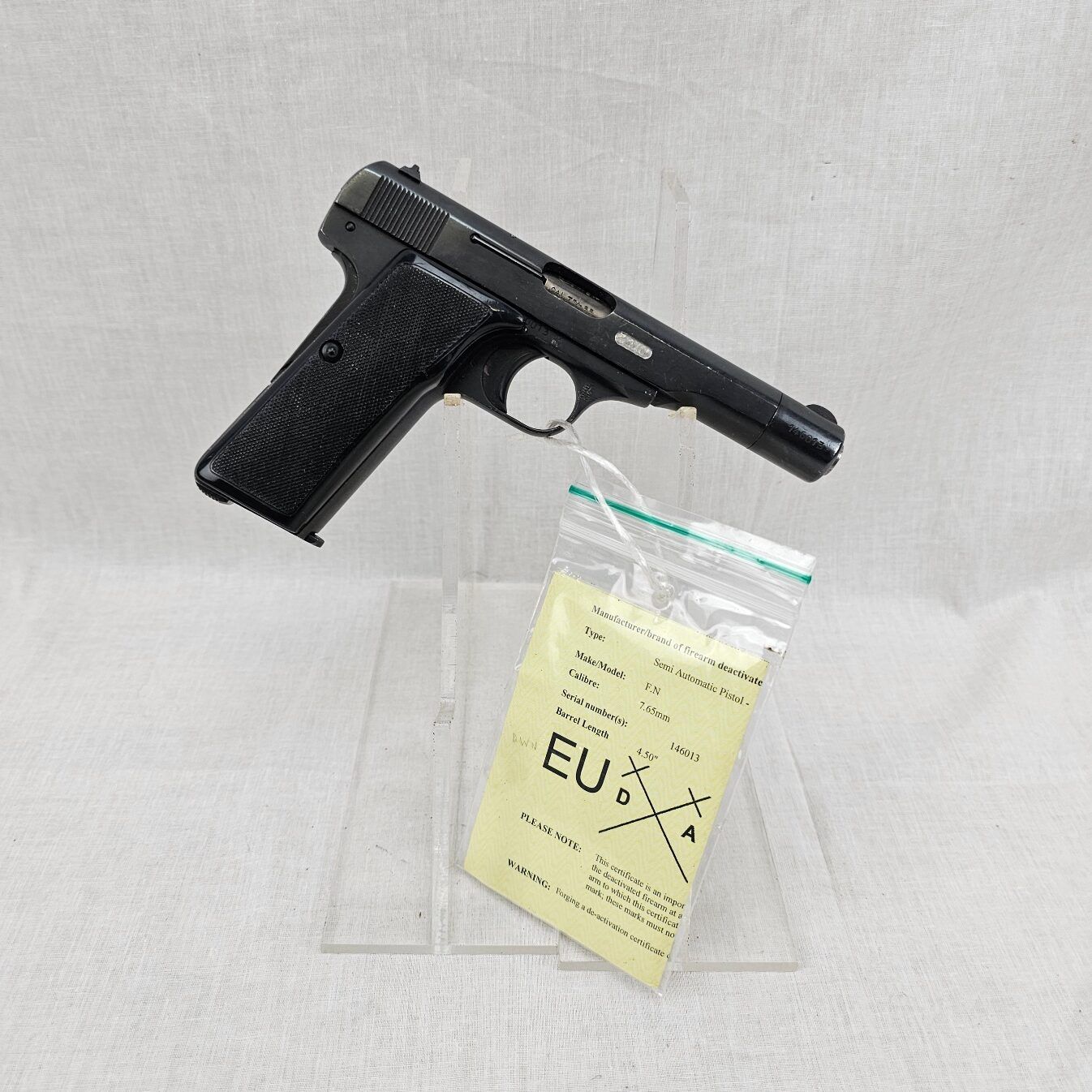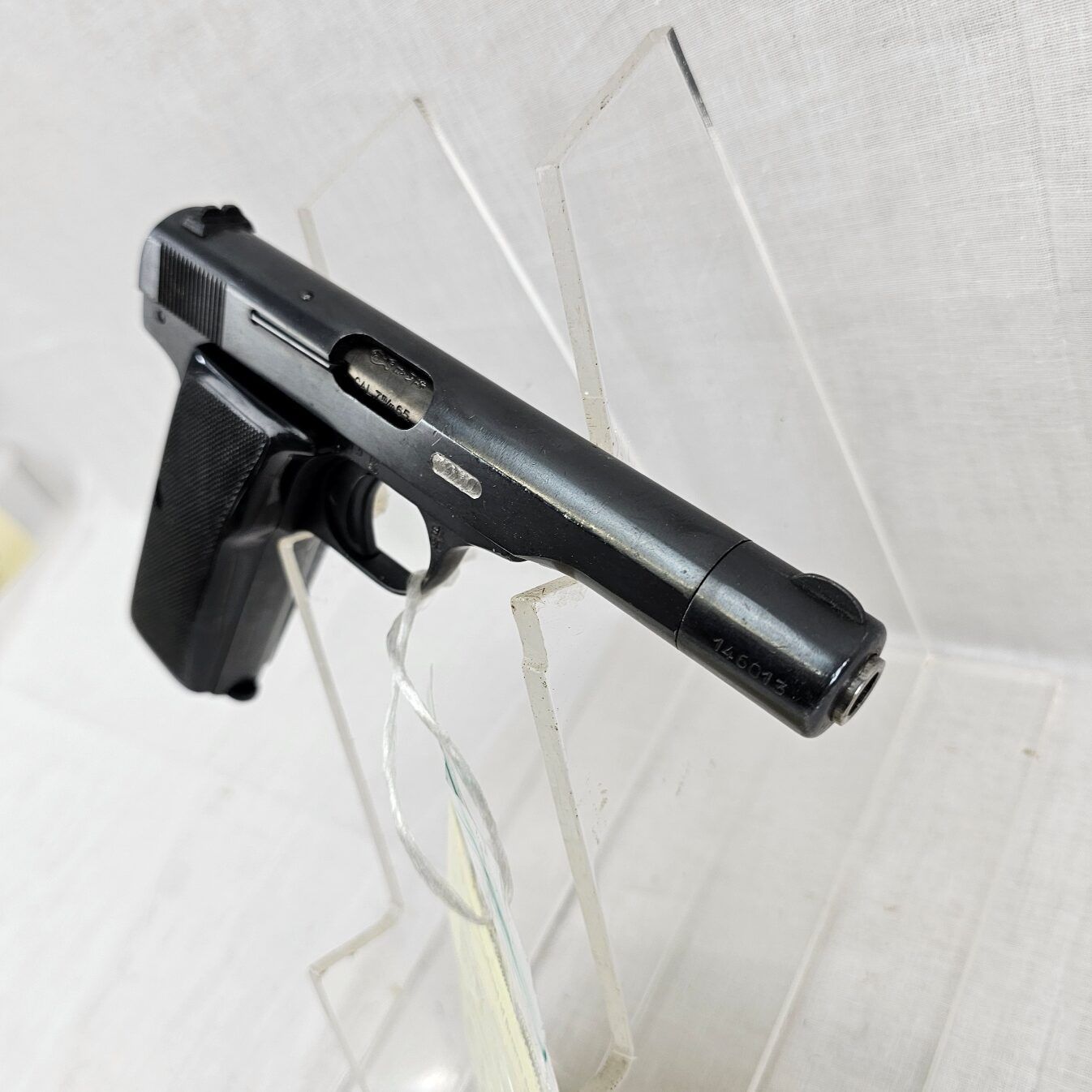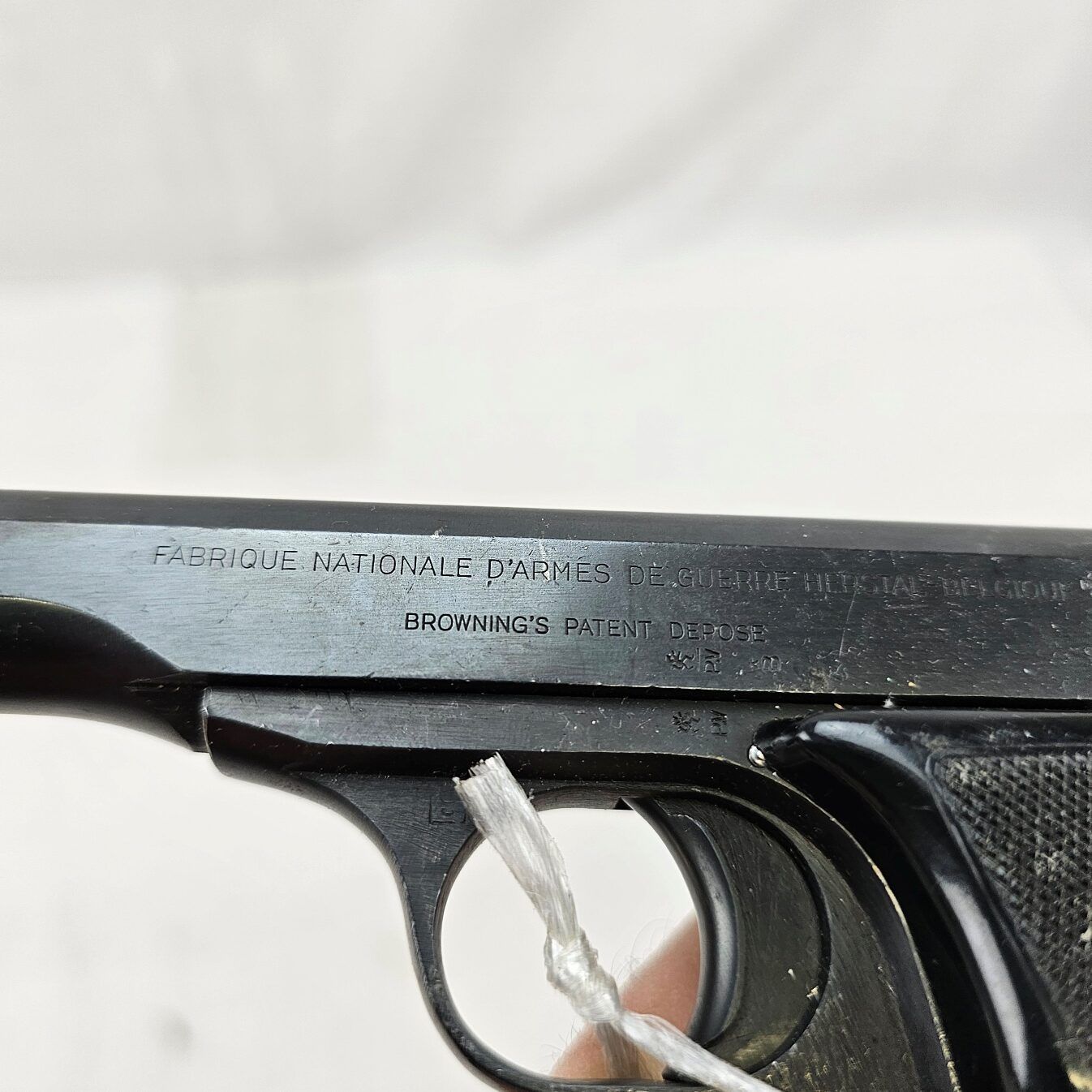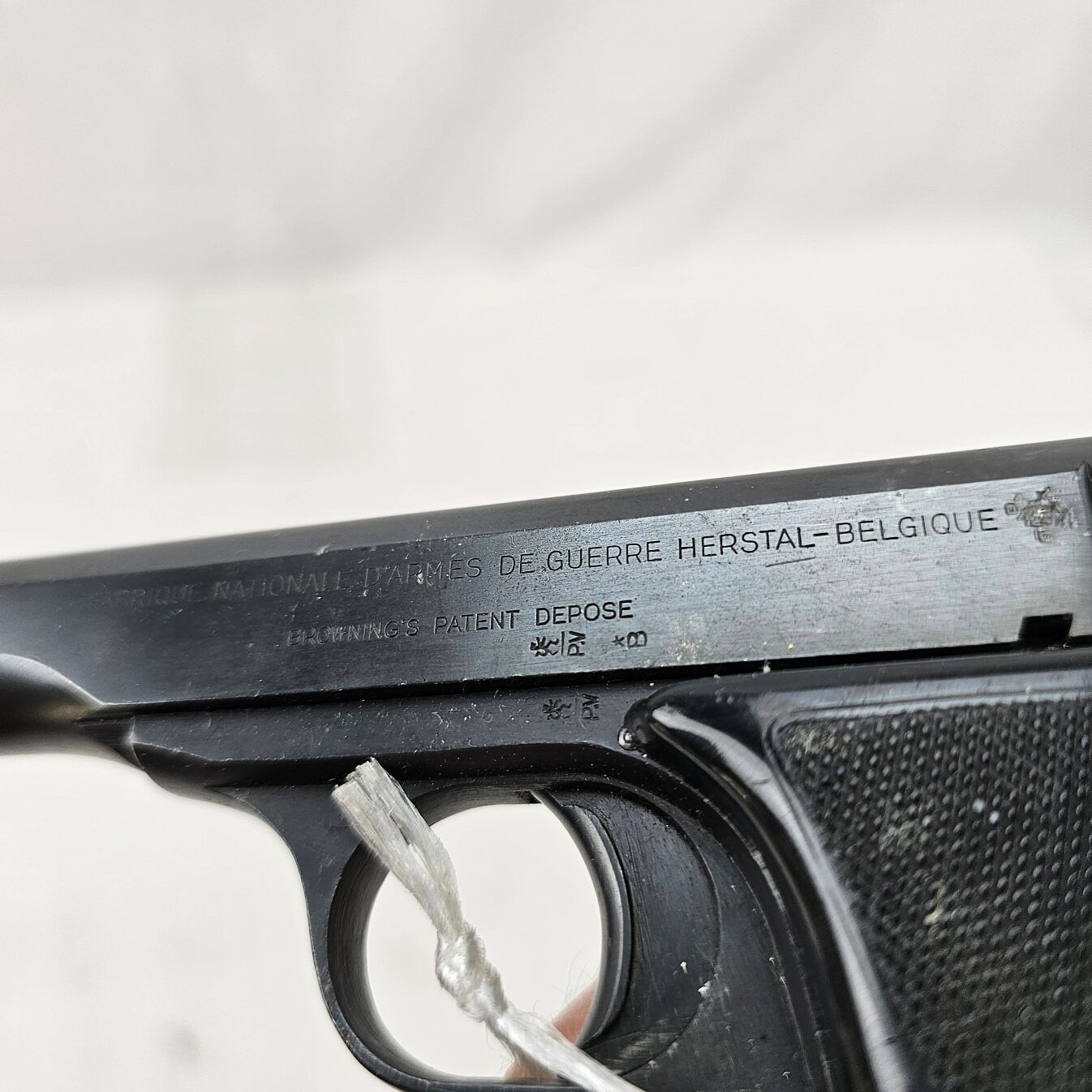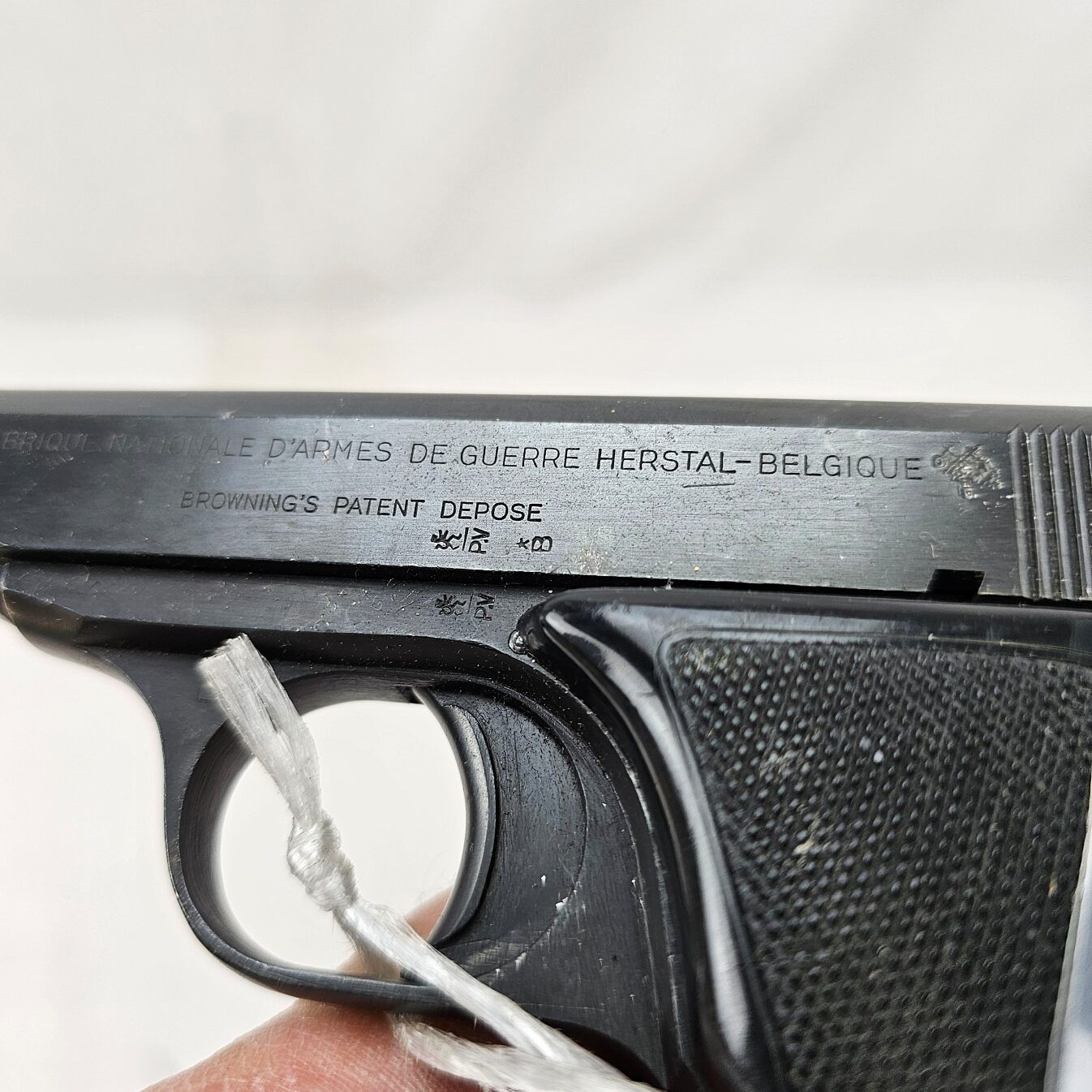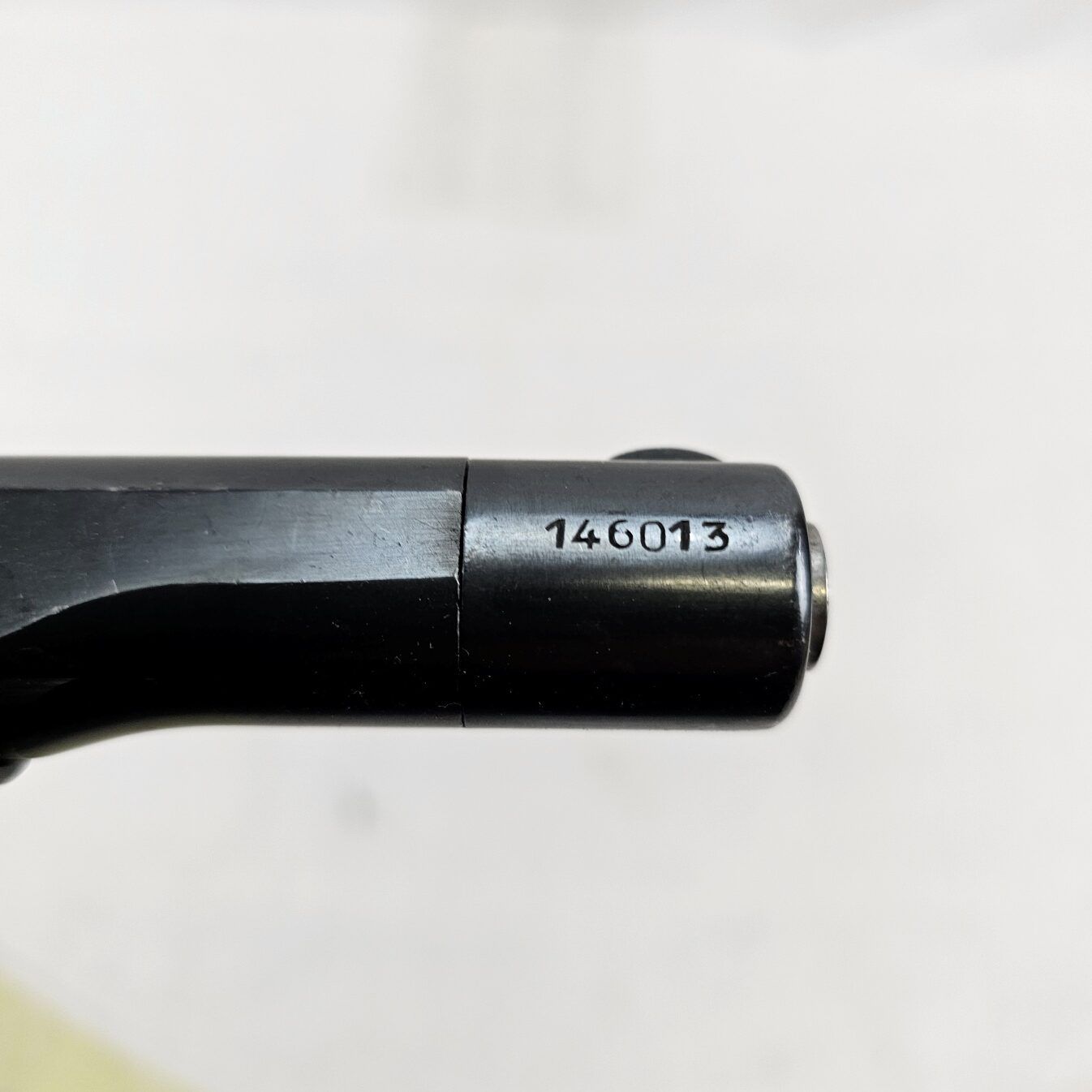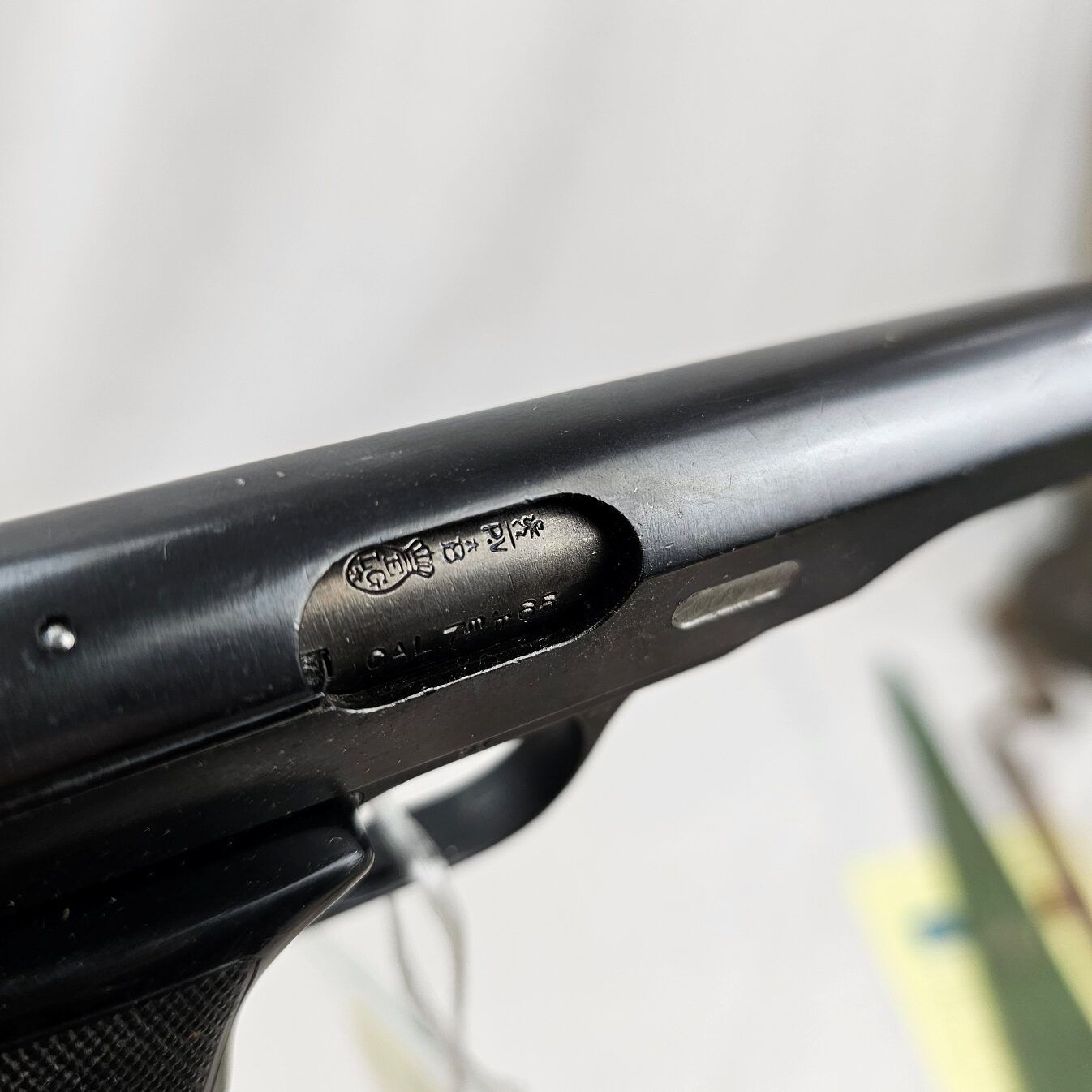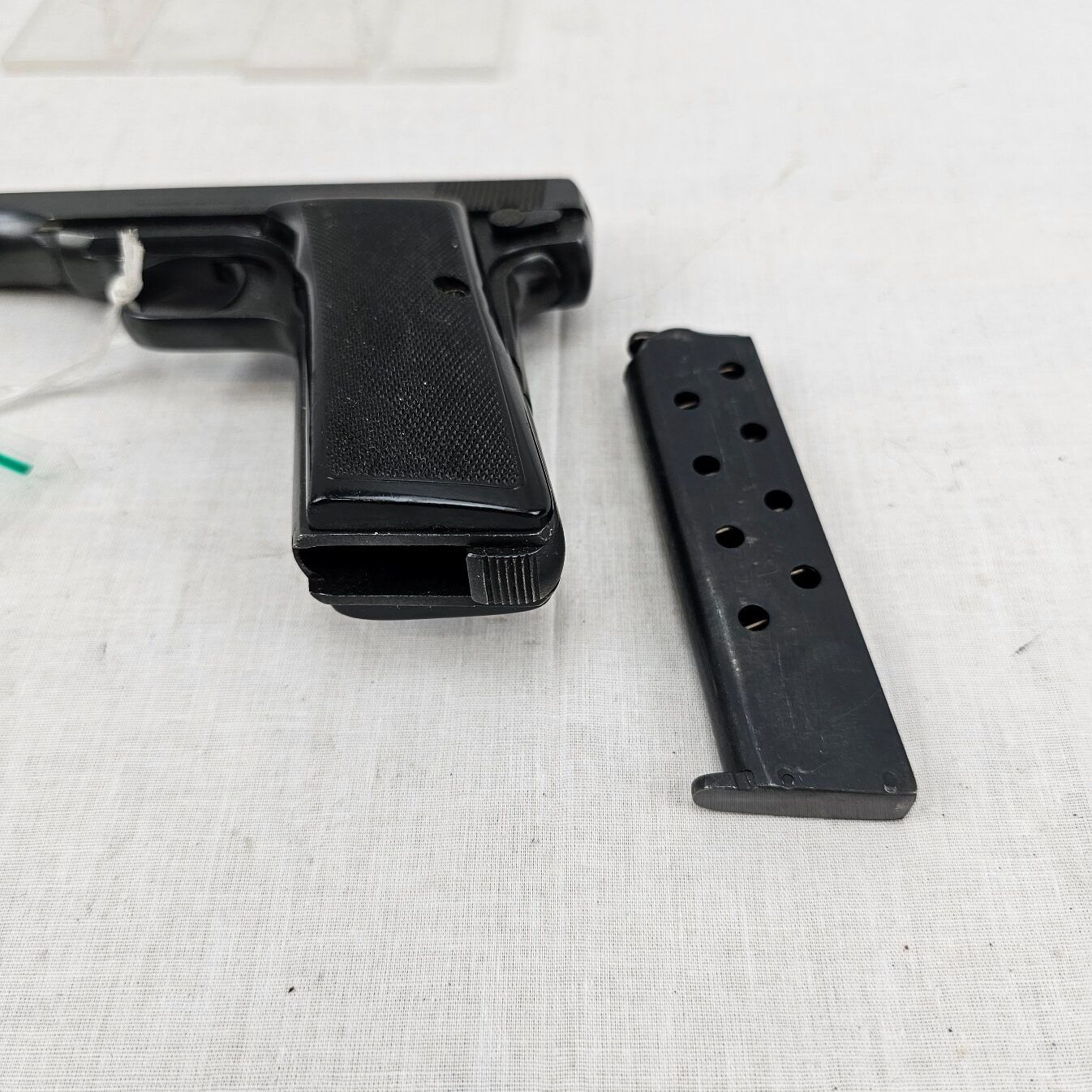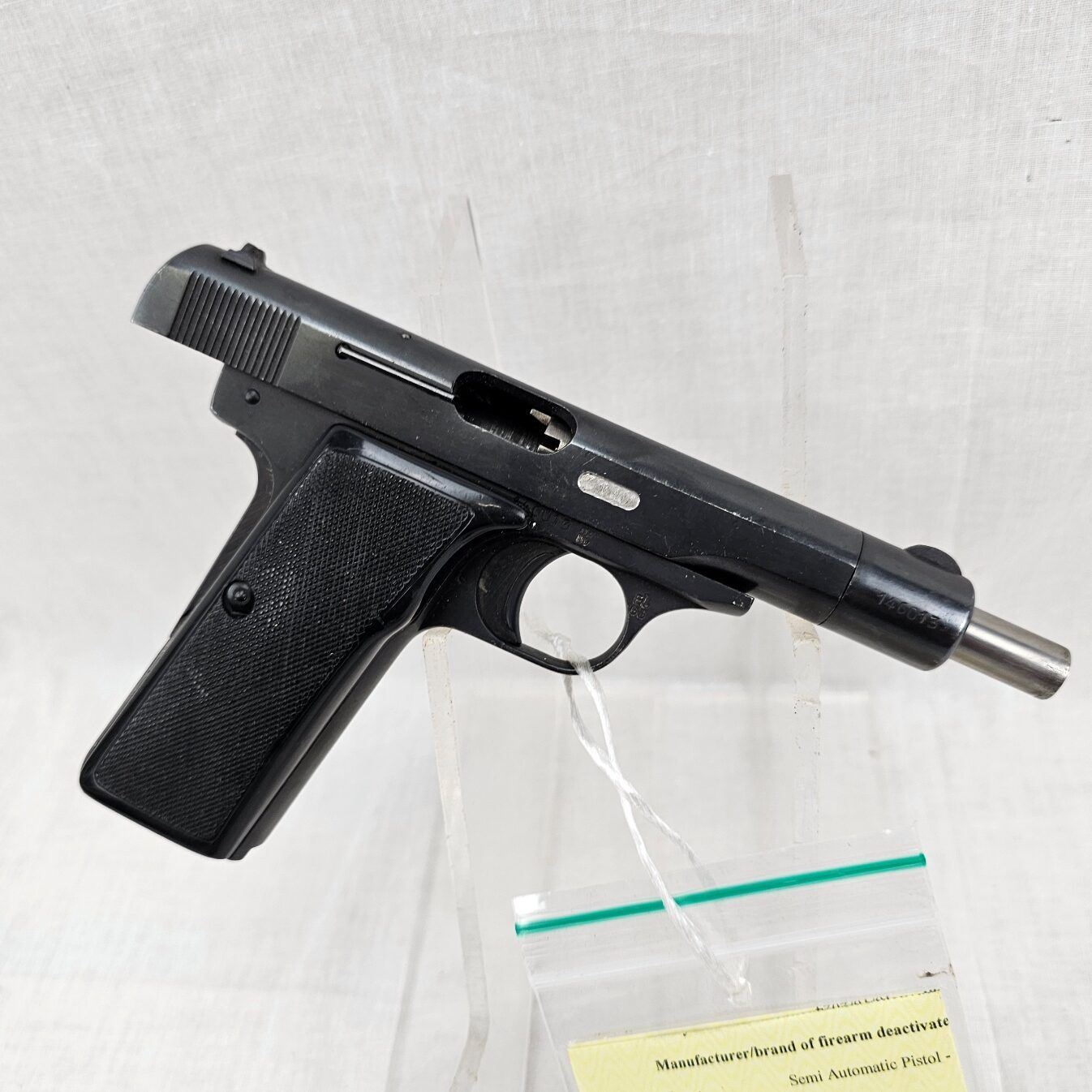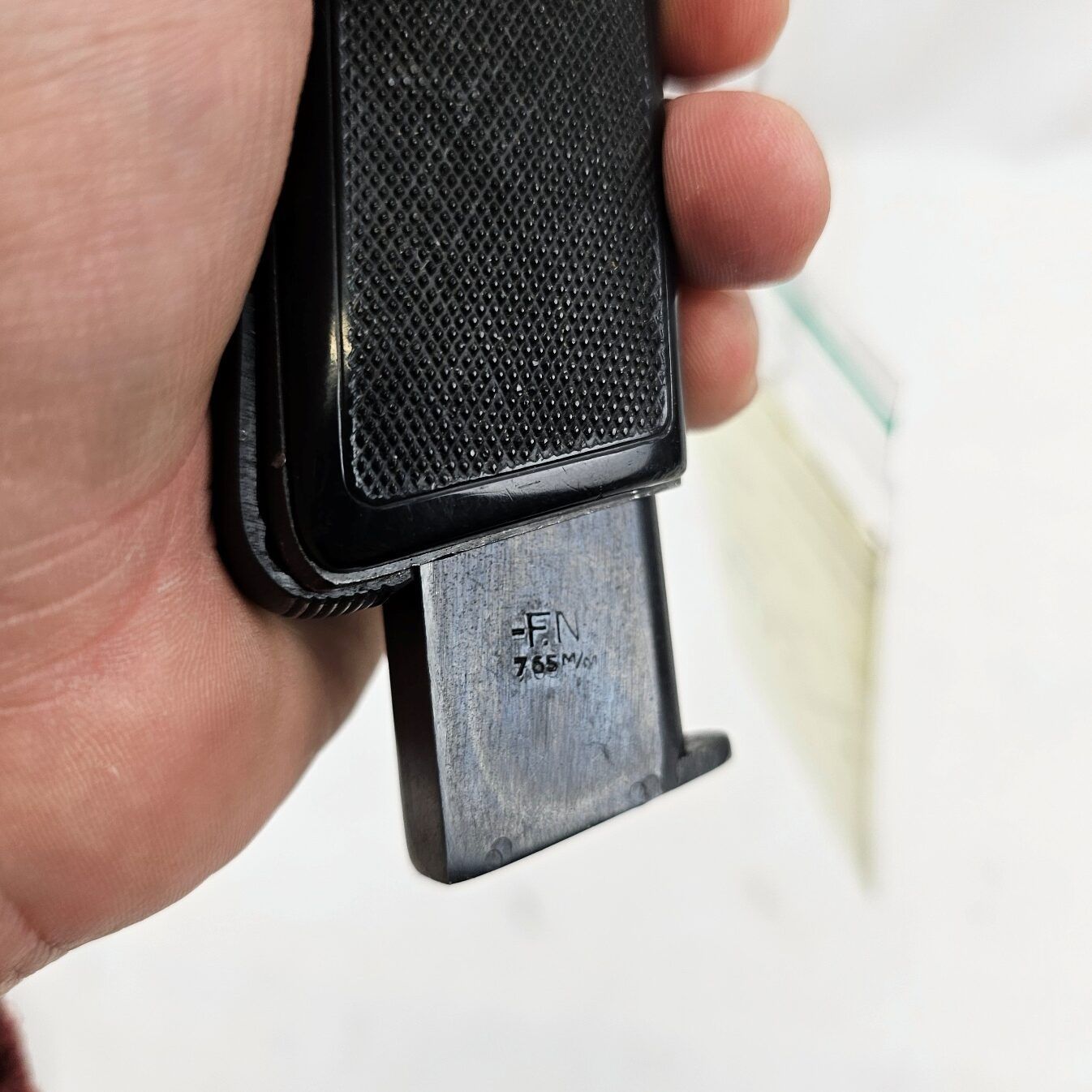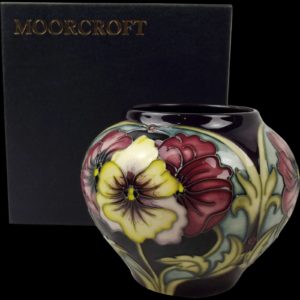~ Browning/FN Model 1910/1922 Cal 7.65mm Semi-Automatic Pistol – Deactivated ~
The Browning FN Model 1910/1922 is a significant firearm with a rich history, particularly during World War II, when it became a widely used sidearm for the German Wehrmacht. Designed by John Browning and produced by the Fabrique Nationale (FN) factory in Herstal, Belgium, this pistol evolved from the earlier FN Model 1910 and became one of the most recognizable sidearms of the mid-20th century.
The slide is stamped with the factory marks and on the slide. It is stamped with the matching serial number 146013 on all main parts.
The pistol comes with its EU/UK deactivation certificate.
The magazine can be removed, the slide and trigger also move under spring tension. It won’t cock or dry fire.
Dimensions:
Overall Length: Approximately 178 mm (7 inches).
Barrel Length: About 113 mm (4.4 inches).
Weight: Roughly 700 grams (1.54 pounds) unloaded.
Historical Context
The FN Model 1922 was an adaptation of the FN Model 1910, which was a compact, striker-fired blowback pistol. The Model 1922 added features requested by military and police forces, including a longer barrel, an extended slide, and a larger magazine capacity.
It was specifically tailored for government and military contracts, making it more versatile than its predecessor.
Pre-War Use:
Prior to WWII, the Model 1922 was adopted by several countries, including Yugoslavia, the Netherlands, Turkey, and Greece, for use by their militaries and police forces.
German Occupation:
After the German invasion of Belgium in 1940, the FN factory was seized, and production of the Model 1922 continued under German control.
Designated the “Pistole 626(b)” by the Germans (the “(b)” indicating Belgian origin), the pistol was widely issued to Luftwaffe (German Air Force) personnel, police units, and other auxiliary forces.
German forces appreciated the pistol for its reliability and simplicity, though it was not a standard sidearm like the Luger P08 or Walther P38.
Design and Features
The most common chambering during WWII was .32 ACP (7.65x17mm Browning), though some versions were produced in .380 ACP (9x17mm Browning Short) for other contracts.
Operates on a simple blowback mechanism, with a striker-fired ignition system. This mechanism is reliable and easy to maintain.
Frame and Slide: Made of steel, ensuring durability and resistance to wear.
Barrel: Fixed to the frame, contributing to consistent accuracy.
Grips were typically made from bakelite or wood, depending on the production period.
Features a single-stack detachable magazine.
Magazine capacity: 8 rounds in .32 ACP, or 7 rounds in .380 ACP.
Basic fixed iron sights, designed for close-range engagements.
Includes a manual thumb safety.
Features a grip safety, requiring proper handling to fire.
Early Belgian production pistols bore standard FN factory markings.
Under German occupation, pistols were marked with Nazi Waffenamt (eagle) inspection stamps, typically “WaA140” or “WaA613,” indicating their acceptance by German forces.
The extended barrel and slide improved accuracy and muzzle velocity compared to the FN Model 1910, making it better suited for military use.
FN workers continued to produce high-quality firearms under occupation, though there were occasional acts of sabotage to disrupt production.
While not a primary combat weapon, the Model 1922 served effectively as a sidearm for non-frontline troops and Luftwaffe personnel, offering reliable performance in various environments.
German-marked FN Model 1922 pistols are highly collectible, especially those with intact Waffenamt stamps.
After WWII, production of the Model 1922 continued for various markets, and surplus pistols remained in use by police and military forces for decades.
The FN Model 1922 represents the intersection of Belgian ingenuity and German wartime necessity, serving as both a practical weapon and a symbol of wartime industry under occupation.


